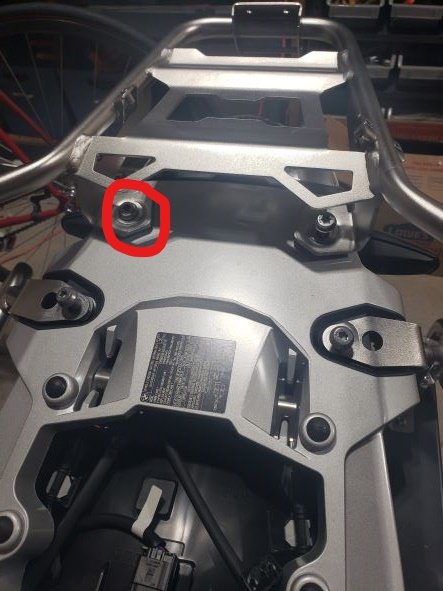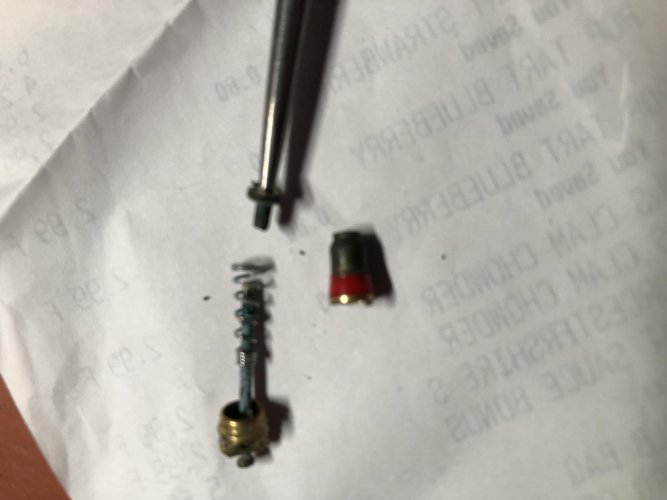I need to take a number of parts off of my 2023 R1250 GSA in order to install the Denali equipment I've purchased. I began taking the rear seat base off as well as the pannier rails. Inadvertently, on one of the bolts I inserted a T30 bit instead of a T40 bit. I had already loosened the other bolts, and they each took a lot of pressure to break loose, so I cranked pretty hard on the ratchet only to have the bit slip out. That's when I realized I had used a T30 instead of the required T40. There are 5 "nubs" on the Torx head; 3 are shaved down to about 60% and the other 2 are pretty well flattened. I'm unable to insert the T40 bit into the bolt head.
I'm new to doing anything like this on a motorcycle so I expected to make some rookie mistakes, but this one worries me. It seems like it may be very difficult to rectify. I've included a picture showing which bolt it is, and, unfortunately, it's under the raised section of the rear rack limiting access to the bolt.
Does anyone have any idea how I could get this out? I would appreciate any potential solution you could provide me. Thanks, Don
I'm new to doing anything like this on a motorcycle so I expected to make some rookie mistakes, but this one worries me. It seems like it may be very difficult to rectify. I've included a picture showing which bolt it is, and, unfortunately, it's under the raised section of the rear rack limiting access to the bolt.
Does anyone have any idea how I could get this out? I would appreciate any potential solution you could provide me. Thanks, Don




